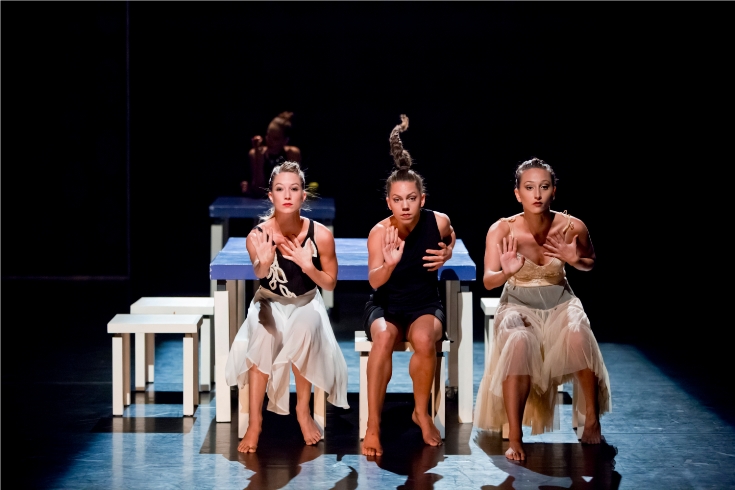
Food is one of the most complex, multi-faceted elements of our society. It can be a symbol of eminence and exclusivity as well as an indication of one’s social personality and standard of living. It is an inseparable aspect of each of our lives on a biological level, yet the social, political and aesthetic components of the art of food and eating are equally revered in our status-obsessed society.
In the surreal, flawlessly executed and often mesmerizingly disturbing production of ‘Kme’hin’, choreographer Amir Kolben depicts precisely this paradox of a society such as ours: food and the lack thereof; beauty and its intrinsically hideous counterpart; rich and poor.
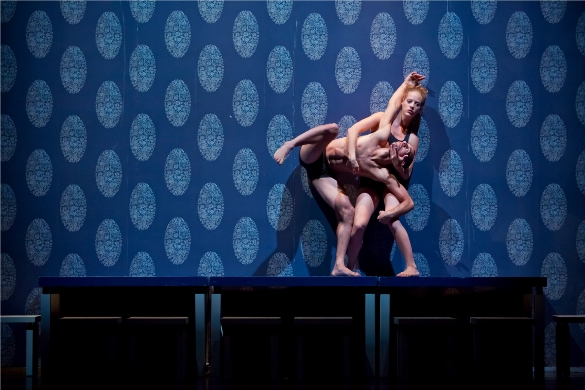
Set against a modest backdrop comprised of nothing but a large table and various stools, ‘Kme’hin’ is a physical portrayal of society’s disparity between excess and absence. The performance is separated into vignettes that incorporate movement, stillness, silence and sound, each in a way that evokes the many social and psychological layers of food. The vignettes, set against dramatically contradictory musical choices, portray specific instances of personal and collective experiences with food. Riddled to the spot, the dancer Stav Dror begins moving in stunning agility and charisma, her entire body an expression of pain, hunger, and emotional intensity. She holds an apple in her hand and shrieks childishly at an invisible mother. Her movements articulate collapse and regeneration, of individual versus societal possession of the self.
This notion is emphasized in Kolben’s specific choreography for each of the eight dancers on stage. Each dancer emphasizes a different emotional spectrum, equally powerful yet distinct from one another in form, depth, and range of their movement. While one dancer writhes on the ground in unsettling and verbal agony, another dances above her, moving fluidly between graceful, circulatory motions and blocky, unnatural contortions. A deeply moving dinner scene between three men, ostensibly depicting a child caught between parental rivalries, becomes a stunning display of dramatic choreography. The men dance together yet apart; connected always by aerial adaptability yet depicting the pain of separation, of forced togetherness and the artificiality of love.
Kolben incorporates effortlessly executed gravity-defying movement, transforming air into motion as the body writhes upon empty space in a blur of colour and limbs. In the pieces in which the eight dance together, their distinct artistic personalities are illuminated by a collective charisma, emphasized by aerial consistency and flawless chemistry.
The peak of the performance was a piece set to classic ballroom music in which all dancers were present onstage yet each painfully, realistically distinct. While each dancer moved individually, the collective sensual stimulation was tangible, as movement and music climaxed into a sudden, chilling silence. The movement then became sporadic, greedy, gluttonous, sexual – the insatiability and decadence of food that haunts our world of physical beauty and perfection.
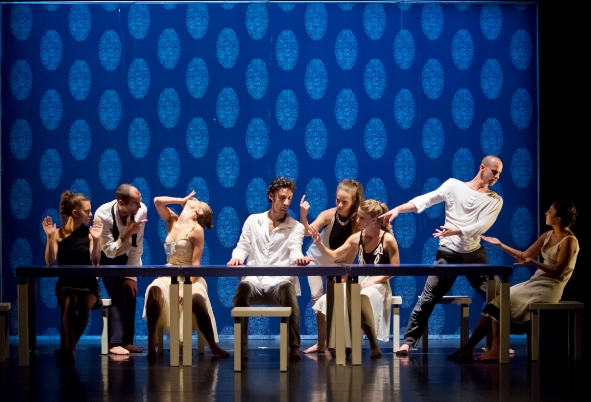
Kolben also explores the religious traditions of food, evoking Da Vinci’s painting ‘the Last Supper’ followed by an outbreak of Passover songs surrounding a large table. In another vignette, the dancers greedily stuff chunks of dry break into their mouths, chewing defiantly and ironically against the implication of Kme’hin – truffles – and a world in which so few can afford such gastronomic luxury.
Kme’hin premiered at the Suzanne Dellal Centre in the context of the Summerdance Festival.

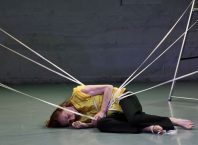
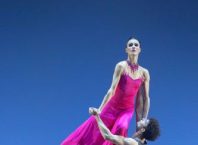
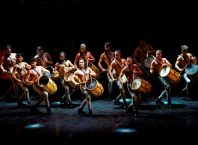

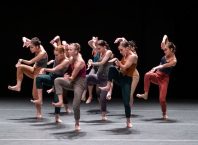
Stav Dror, the beautiful dancer, is amazing. She is gorgeous! Her presence on the stage is very felt every second she is there. She is the most perfect dancer I saw.
Comments are closed.